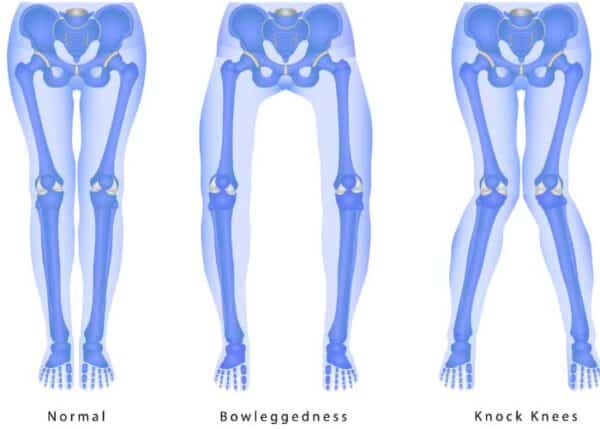Malalignment of the Lower Extremity Specialist

Are you experiencing malalignment of your knees? If so, you may have bow legs or knocked knees. Many individuals have some level of malalignment but it does not lead to injury, while other specific patients with bow legs or knocked knees are susceptible to a number of knee injuries. Malalignment knee specialist, Dr. Jeff Padalecki provides diagnosis and both surgical and nonsurgical treatment options for patients in Austin who have bow legs or knocked knees. Contact Dr. Padalecki’s team today!
What is Malalignment of the Lower Extremity?
Legs that are described as being “bow legged” (varus) or “knock kneed” (valgus) fall into the category of malalignment of the lower extremity. These conditions can be related to a congenital deformity or could be the result of prior injury or meniscus deficiency. These alignment abnormalities can predispose an individual to pain, knee instability, or even ligament injuries. Orthopedic knee specialist in the Austin, Round Rock, and Cedar Park, Texas communities, Dr. Jeff Padalecki specializes in treating patients’ malalignment of the lower extremity.
In a “balanced” knee, the weight is transferred through the middle of the joint in an even way. This situation allows the body weight to be divided across both the inside (medial) and outside (lateral) knee compartments. This scenario allows the joints to bear weight more effectively and the entire knee can “share the burden.” When the leg is not perfectly straight, the weight-bearing axis of the leg is not balanced, leading to overload on one side that can be associated with ligament, cartilage and meniscus problems.
In the “bow-legged” or varus knee, the majority of the bodyweight passes through the inside (medial) of the knee and can predispose this area to injury. This situation can be worsened by obesity, overuse or concurrent joint problem such as a meniscus tear.
In a “knock-kneed” or valgus patient, the outside (lateral) of the knee can be overloaded in the same manner. This can lead to pain of structural abnormalities that are worsened by other knee pathologies.
The improper distribution of force that results from malalignment can cause a multitude of problems in the knee, such as a meniscus tear, cartilage or even ligament damage. These conditions can cause progressive deterioration of the joint cartilage or osteoarthritis. If left untreated, the patient could potentially suffer from a loss of the articular cartilage surface, degenerative arthritis and the possibility of a knee replacement.

What are the Symptoms of Malalignment of the Lower Extremity?
The most common symptom of malalignment of the lower extremity is pain, especially if the condition is left untreated and the cartilage becomes damaged or if there are tears in the meniscus or ligaments. Other associated symptoms of malalignment include swelling, inflammation, and stiffness.
How is Malalignment of the Lower Extremity Diagnosed?
Dr. Padalecki will conduct a thorough examination of the knee and perform a series of tests to check overall alignment of the limb. He will look at the balance of the knee and see how weight is distributed as well as the physical structure of the knee in a standing position. Certain tests may be utilized to determine the extent of the issue and the next course of action which may include X-rays or an MRI.
What is the Treatment for Malalignment of the Lower Extremity?
Non-Surgical
In some cases, Dr. Padalecki may recommend treatment for a malaligned lower extremity. He will commonly begin with non-surgical treatments, which include the standard modalities of activity modification, anti-inflammatories, and therapy. A special knee brace called an unloader brace can often provide relief to patients with malalignment.
Surgical
Depending on the type of malalignment diagnosed, there are a number of surgical options to aid in the correction of the condition, such as a corrective osteotomy, a total knee replacement, or a unicompartmental knee arthroplasty. Dr. Padalecki will review these options with the patient and decide on the best course of action depending on patient lifestyle and desires
What Occurs After Surgery for Malalignment?
After surgery, the patient may have the knee placed in a brace to immobilize it for a period of time. The use of crutches can help minimize weight on the knee. After a few weeks of immobilization, you will begin a course of physical therapy focusing on returning motion and strength back to the injured knee and surrounding muscles.
For more information on malalignment of the lower extremity in the knee, bow legged or knock kneed, contact the office of Dr. Jeff Padalecki, knee specialist in Austin, Texas.